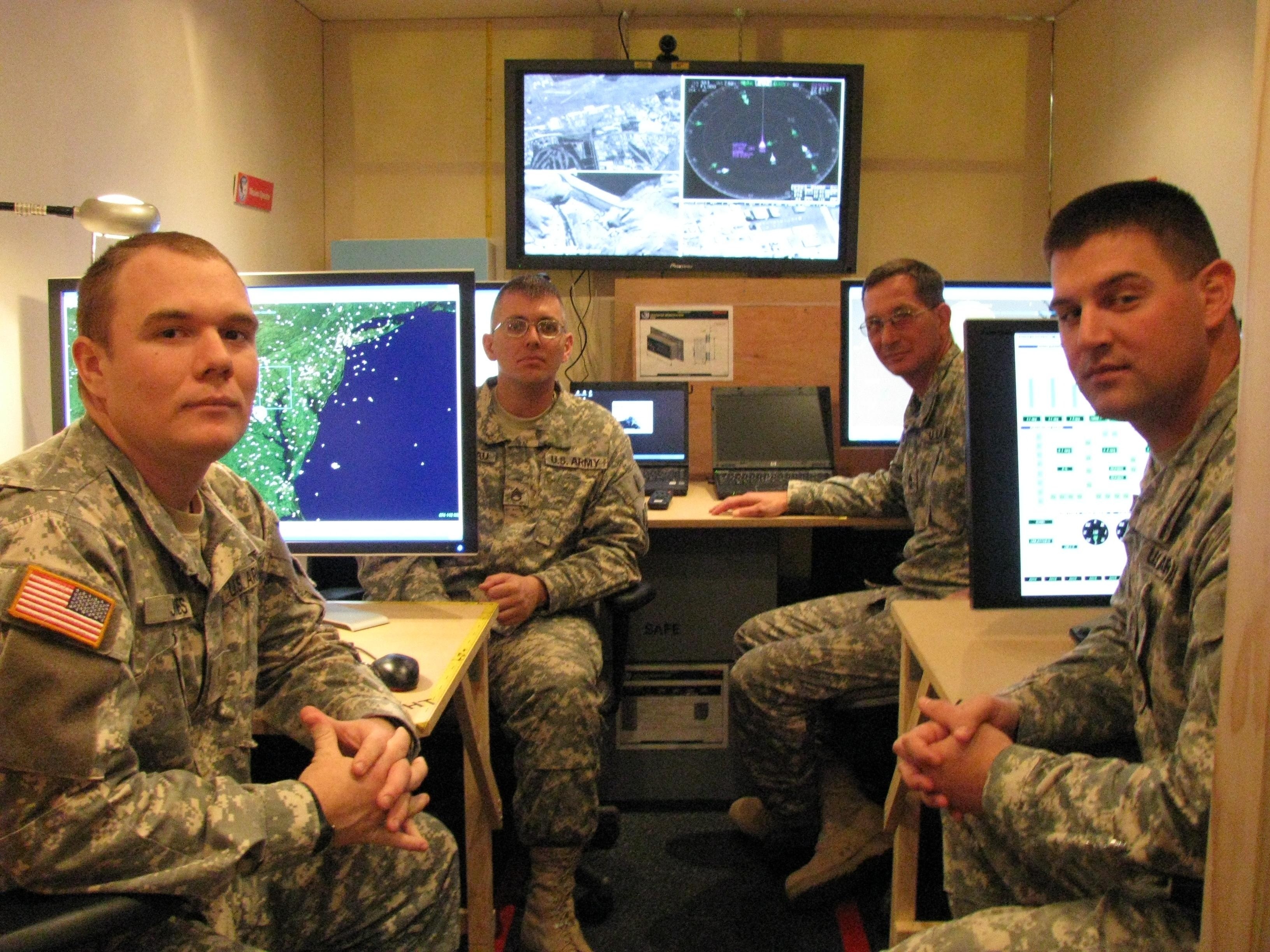
Early user assessment is akin to kicking the tires on a new vehicle. It's best for the designers to get the user's input before the final product.
That's the idea behind bringing a group of Soldiers from Fort Bliss, Texas, to Raytheon in Huntsville for early user assessment of the JLENS communication and control station March 4-6. JLENS stands for Joint Land Attack Elevated Netted Sensor System.
"This is the first of several evaluations with the user community that we will have as we mature the design prior to fielding," Neal Tilghman, a principal human systems engineer at Raytheon Warfighter Protection Center, said. The second early user assessment is scheduled in October.
The goal is to get user feedback on the design concepts and layout of the JLENS communication and control station.
"We're in the early prototype stage and we want to head off any early issues, design concerns, in the early phase of the program," Tilghman said. "The key takeaway from that is we have prototyped the CCS shelter and we're conducting in-shelter exercises with the Fort Bliss user team to validate the design objectives."
The team members from Fort Bliss included Master Sgt. Greg Heidenescher, Staff Sgt. David Brandau, Chief Warrant Officer 3 Chad Sneller and 2nd Lt. Mike Jones. Heidenescher and Brandau are from the 11th Air Defense Artillery Brigade; and Sneller and Jones belong to 1st Battalion, 43rd Air Defense Artillery.
"We all have an association with the Patriot missile system," Heidenescher, from Monroe, N.C., said. "We're here to give inputs on the JLENS system shelters and the JLENS itself. They seem to be asking questions about everything - from creature comfort to functionality."
Heidenescher won't see JLENS fielded because he's retiring in January after 22 years, but he likes the system's concept.
"It looks to be a great asset to what we plan to do in the future," he said.
Brandau, from Charles City, Iowa, has been in the Army nearly 14 years but just in air defense for two years. He too likes the JLENS concept.
"You're going to have a bigger picture of the battlefield," Brandau said. "For those commanders, you're going to have a bigger picture for them to see. It's an awesome piece of equipment."
Sneller, from Midland, Mich., has been in the Army 14 and a half years.
"I think this'll be a great system," Sneller said. "It's going to definitely enhance the capabilities of the Army."
Jones, from Silver Spring, Md., has four years in the Reserve and about a year and a half on active duty.
"I was really impressed (with JLENS)," Jones said. "Definitely its capabilities are of a lot of use. I hope the Army goes forward with the program, definitely in the Middle East and Korea."
The JLENS Product Office is under the Cruise Missile Defense Systems Project Office within the Program Executive Office for Missiles and Space.
JLENS is in the system design and development phase and just recently passed a milestone by completing its preliminary design review in the first week of February. It will begin testing in 2010 and begin fielding in 2011 to a Fort Bliss unit.
A contract was signed with Raytheon, the material developer, in December 2006 to build two orbits.
The system consists of two 74-meter aerostats which work in tandem and can stay up for 30 days. One has a surveillance radar and the other has a fire control radar. The surveillance radar is built to pick up multiple targets. It passes data to the fire control radar which provides precision tracking information over several joint networks.
Product manager Lt. Col. Steve Willhelm explained, "It's an air defense system, and it's a sensor. It's not a shooter."
"JLENS is an elevated persistent sensor capability that delivers a sensor air picture to the war fighter and associated systems," Willhelm said.

Social Sharing